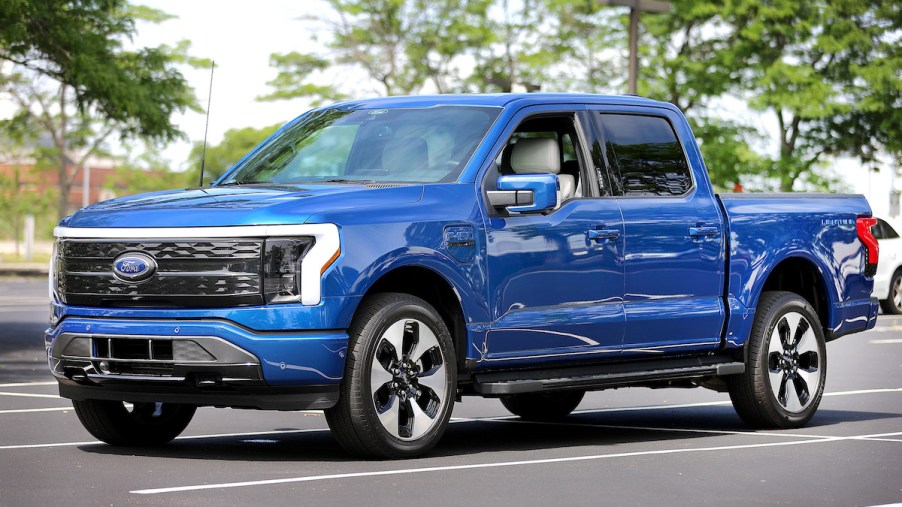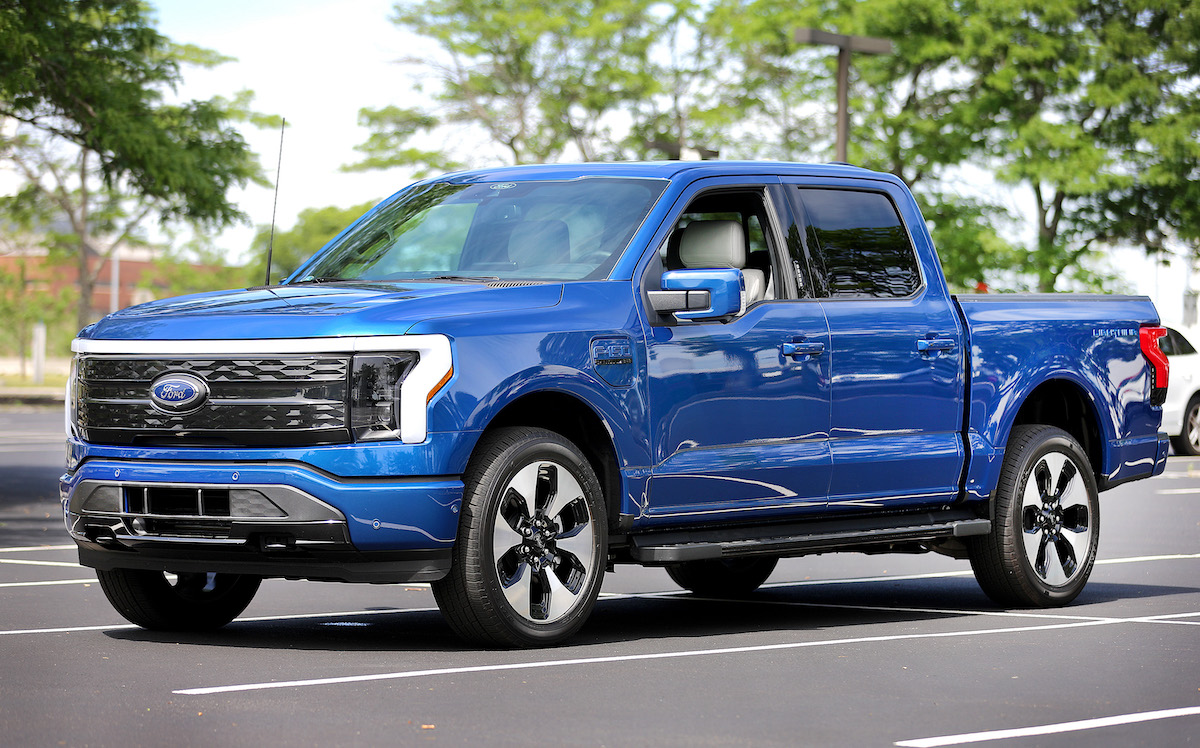
The Ford F-150 Lightning Has the Worst Fuel Economy of Any EV
The Ford F-150 Lightning is the Blue Oval’s latest EV, and there’s a lot of hype surrounding it. One reason for all the excitement is because Ford’s bestseller has gone all-electric, which should mean a more efficient and greener truck. That said, although electric vehicles are cleaner than internal combustion engine (ICE) cars, some EVs are more efficient than others. Unfortunately, the Ford F-150 Lightning is extremely inefficient.
What ‘MPGe’ means and how it applies to EVs
“MPGe” stands for “miles per gallon equivalent.” It’s a good measurement to give people an idea how efficient their EV is compared to an ICE car. The way MPGe works is simple. Because EVs get their power from batteries, and because ICE cars get their power from burning gasoline, it’s possible to compare the two based on how much power is in a gallon of gasoline.
A gallon of gas has about 33.7 kWh of energy, and with that number in mind, the EPA can figure out the MPGe of an EV. For example, if an EV can go 100 miles on 33.7 kWh of energy, it has an MPGe of 100. As a result, MPGe is a good way to get a sense of how efficient an EV is with its electricity, and it’s a good way to compare an EV with an ICE car. That said, it’s not a great way to get a sense of how an EV’s electric driving range.
The 2022 Ford F-150 Lightning has a much lower MPGe than other EVs

According to Car and Driver, the standard 2022 Ford F-150 Lightning has a terrible fuel economy of 76 MPGe in the city and 61 MPGe on the highway. The good news is that buyers who chose the Extended Range option will get better efficiency from their Ford truck. The Extended Range boosts the Lightning’s efficiency to 78 MPGe in the city and 63 MPGe on the highway. That fuel economy is worse than what most, if not all, new EVs on the market get.
Just as with ICE cars, EVs that don’t have much power tend to be fuel-efficient, while powerful EVs to be less fuel-efficient. The Chevy Bolt EV is a relatively unremarkable car, but it gets a whopping 120 MPGe. The Kia Niro EV is another unremarkable electric vehicle, but it gets 112 MPGe. Even a high-performance EV like the Porsche Taycan gets 79 MPGe.
Size matters, so the Ford F-150 Lightning might not be the worst for long
Though powerful electric motors can be a drain on an EV’s efficiency, the main issue at play here is size. Because the Ford F-150 Lightning is a full-size pickup truck, the automaker has equipped it with powerful motors and large batteries. Both are necessary because the extra power allows the F-150 Lightning to tow 10,000 pounds, and its massive 131.0-kWh Extended Range battery pack gives the truck up to 320 miles of range.
Even with the standard 98.0-kWh battery, the F-150 Lightning is a heavy truck. Car and Driver estimates the truck weighs close to 7,000 pounds, and that extra mass is a big reason why the Lightning has poor fuel economy. That said, the Ford F-150 Lightning is one of the first large EVs on the market, and more are coming. Models like the GMC Hummer EV, Cadillac Lyriq, and Ford E-Transit could ultimately be less efficient than the F-150 Lightning.


